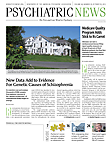In DSM-IV-TR, sexual dysfunctions referred to sexual pain or to a disturbance in one or more phases of the sexual-response cycle. Research suggests that sexual response is not always a linear, uniform process and that the distinction between certain phases (for example, desire and arousal) may be artificial. In contrast to DSM-IV-TR, gender-specific sexual dysfunctions have been added, and, for females, sexual desire and arousal disorders have been combined into one disorder (female sexual interest/arousal disorder). To improve precision regarding duration and severity criteria compared with DSM-IV-TR and to reduce the likelihood of overdiagnosis, all of the sexual dysfunctions (except substance- /medication-induced sexual dysfunction) now require a minimum duration of approximately six months and more precise severity criteria. This provides useful thresholds for making a diagnosis and distinguishes transient sexual difficulties from more persistent sexual dysfunction. Genito-pelvic pain/penetration disorder is added to DSM-5 and represents a merging of vaginismus from dyspareunia, which were highly comorbid and difficult to distinguish. The diagnosis of sexual aversion disorder is removed due to rare use and lack of supporting research.
The questions below are from
DSM-5 Self-Exam Questions: Test Questions for the Diagnostic Criteria, which may be preordered from American Psychiatric Publishing at
http://www.appi.org/SearchCenter/Pages/SearchDetail.aspx?ItemId=62467. The answers and rationales are posted at
http://www.psychnews.org/pdfs/DSM-5_Self_Examination_QandA_14.pdf. The book, available in January 2014, contains 500 questions for all the categories of psychiatric disorders and includes Section III. The questions were developed under the leadership of Philip Muskin, M.D., a professor of clinical psychiatry at Columbia University College of Physicians and Surgeons. APA members may purchase the book at a discount.
1. Which one of these DSM-IV-TR diagnoses is still included in DSM-5?
a) sexual aversion disorderb) female orgasmic disorderc) dyspareuniad) vaginismuse) none of the above
2. Which of these terms is a valid subtype of sexual dysfunction in DSM-5?
a) lifelongb) secondary to a medical conditionc) due to relationship factorsd) due to psychological factorse) none of the above
3. Which of these is most accurate with regard to the DSM-IV-TR diagnosis of sexual dysfunction due to a general medical condition?
a) This diagnosis is now classified with the somatic symptom disorders.b) New criteria for this diagnosis specify that the general medical condition must have been present for at least six months.c) New criteria for this diagnosis specify that the general medical condition must be included in the ICD-10 diagnostic manual.d) This diagnosis no longer exists, because this condition had poor diagnostic reliability.e) This diagnosis no longer exists, because a sexual dysfunction that is better accounted for by a medical condition is no longer given a psychiatric diagnosis. ■
